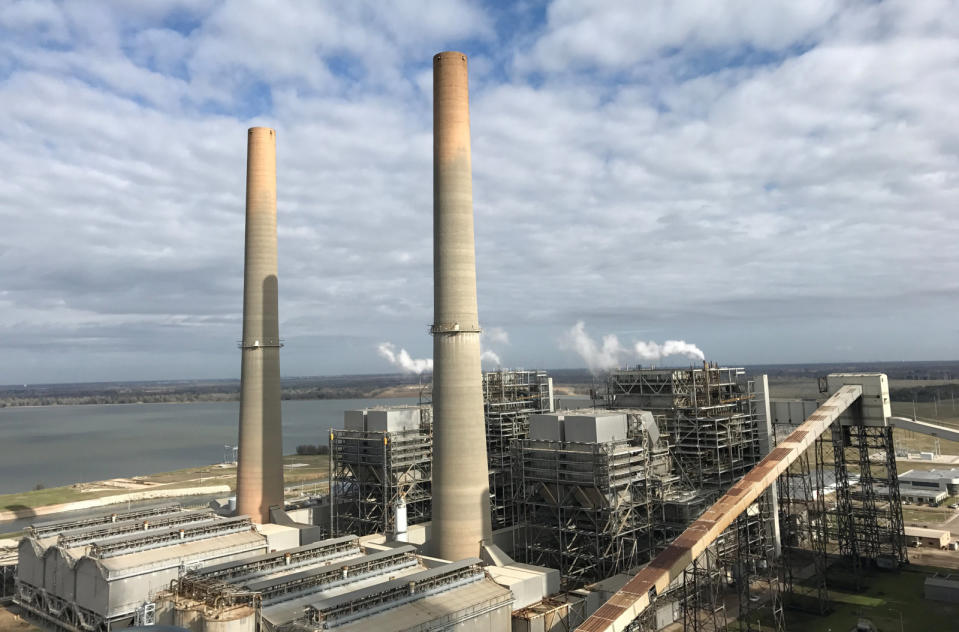Xprize finalists to test CO2 recycling ideas in power plants
The finalists will be split into two tracks. One will test their tech with coal, and the other with natural gas.
In September 2015, the NRG COSIA Carbon Xprize was born. Through a total of $20 million in reward money, the aim of this particular Xprize is to challenge participants to come up with a way to convert CO2 emissions into something actually useful. Almost two and half years later, and the Xprize crew have now whittled down the contestants from 27 semi-finalists to ten finalists.
Each of the finalists will be awarded their equal share of $5 million (that works out to $500,000 per team), and will be split into two tracks. The remaining $15 million of the prize purse will be split into two -- $7.5 million goes to the winner of each track. One group of five will test out their tech at a coal-fired power plant in Gillette, Wyoming, while the other five will head to a natural gas-fired plant in Alberta, Canada. Each team will be tasked to actually put their plans into practice in a real-world setting day after day, week after week, for a total of eight months.
Teams are evaluated based on a few different factors: just how much CO2 is converted, the economic value of the product, the market size, the CO2 uptake of the products, as well as the overall carbon footprint of the entire process. The semi-finalists already had to undergo a 10-month test period in order to get to the final stage, but because this last hurdle involves testing out their tech in real-world facilities, they'll have to scale up at least 10 times greater.
"It is the final, most ambitious stage of the prize competition," said Dr. Marcius Extavour, Xprize senior director of Energy and Resources, who also happens to be the leader of the NRG COSIA Xprize. The team expects to announce a winner in two years.
One of the reasons the final stage of the Xprize is so demanding, is because Extavour wants it to actually be economically feasible. "We want to see if these solutions can be done at scale. This is crucial to catalyze interest not just in other innovators but policymakers as well. We want the public to get interested, and we want governments to pay attention."
"We created this Xprize with a few goals in mind," said Extavour. "One was to push teams in a difficult and ambitious endeavor, in order to inspire breakthrough innovations. We also want the public to follow the competition, and to be inspired by what's possible."
But more importantly, the larger goal is to deal with climate change. "When you typically hear about our CO2 problem, there's generally not a lot of good news," continued Extavour. "But we think innovation and ingenuity can lead to a low carbon future. [The Xprize] can help light a spark of the bonfire of innovation." He said it could lead to greater economic activity as well as creating more sustainable products.
That's why the NRG COSIA Xprize also started the Circular Carbon Network (CCN) initiative last year. The idea behind the CCN is to basically take the carbon conversion concept from the lab to the mainstream market and, hopefully, get some capital investment. "Our goal is to take these technologies to the fully industrial scale," explained Extavour.
The ten finalists of the NRG COSIA Xprize are listed below, with descriptions provided by Xprize.
The Wyoming track (converting CO2 emissions from a coal-fired power plant):
Breathe (Bangalore, India) - Led by Dr. Sebastian Peter, the team is producing methanol.
C4X (Suzhou, China) - Led by Dr. Wayne Song and Dr. Yuehui Li, the team is producing chemicals and bio-composite foamed plastics.
Carbon Capture Machine (Aberdeen, Scotland) - Led by Dr. Mohammed Imbabi, the team is producing solid carbonates with applications to building materials.
CarbonCure (Dartmouth, Canada) - Led by Jennifer Wagner, the team is producing stronger, greener concrete.
Carbon Upcycling UCLA (Los Angeles, CA, USA) - Led by Dr. Gaurav Sant, the team is producing building materials that absorb CO2 during the production process to replace concrete.
The Alberta track (converting CO2 emissions from a natural gas-fired power plant):
C2CNT (Ashburn, VA, USA) - Led by Dr. Stuart Licht, the team is producing carbon nanotubes.
Carbicrete (Montreal, Canada) - Led by Dr. Mehrdad Mahoutian, the team is producing cement-free, carbon-negative concrete that uses waste from steel production as an alternative to traditional cement.
Carbon Upcycling Technologies (Calgary, Canada) - Led by Apoorv Sinha, the team is producing enhanced graphitic nanoparticles and graphene derivatives with applications in polymers, concrete, epoxies, batteries and pharmaceuticals.
CERT (Toronto, Canada) - Led by Dr. Alex Ip of the Sargent Group at the University of Toronto, the team is producing building blocks of industrial chemicals.
Newlight (Huntington Beach, CA, USA) - Led by Mark Herrema, the team uses biological systems to produce bioplastics.


